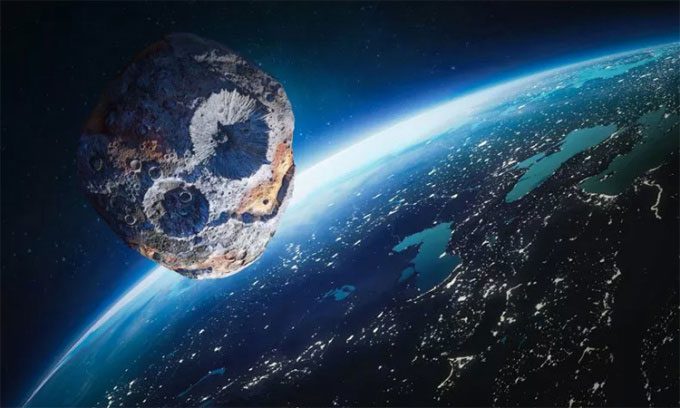Asteroid 2006 HV5 is expected to fly past Earth at a speed of approximately 62,600 km/h on April 26, which is about 22 times the speed of a bullet.
2006 HV5 has a diameter of about 400 meters, while the height of the Eiffel Tower is around 300 meters. This asteroid will approach Earth at a distance of 6.3 times that of the Moon, equivalent to 2.4 million kilometers, according to data from the Center for Near Earth Object Studies (CNEOS) at NASA. While this distance may seem vast, it is still relatively close in the context of space. The nearest neighboring planet to Earth, Venus, is situated about 61 million kilometers away.

Simulation of the asteroid passing close to Earth. (Image: iStock)
Asteroids are rocky remnants from the formation of the Solar System billions of years ago. Most asteroids are found in the asteroid belt. They come in various shapes and sizes, with the smallest being about 9 meters and the largest reaching hundreds of kilometers. The largest asteroid in the Solar System is Ceres, which has a diameter of 945 kilometers, followed by Vesta with a diameter of 530 kilometers.
Asteroids can leave their belts and fly close to Earth and other planets for several reasons. “We believe they formed in the asteroid belt and were pushed out due to collisions (in this case, the asteroid is debris from a larger asteroid that was impacted), or their orbits became unstable due to the orbital resonance of Jupiter in the belt,” explained Franck Marchis, a senior planetary astronomer at the SETI Institute.
2006 HV5 is one of over 31,000 Near Earth Objects (NEOs) that scientists have identified to date. NEOs are defined as astronomical objects that pass within approximately 48 million kilometers of Earth’s orbit. They are classified as “potentially hazardous” if they come within about 7.4 million kilometers of Earth’s orbit and have a diameter greater than 140 meters.
To date, NASA has identified around 2,300 potentially hazardous objects. However, 2006 HV5 is highly unlikely to collide with Earth, as it will simply pass by.


















































